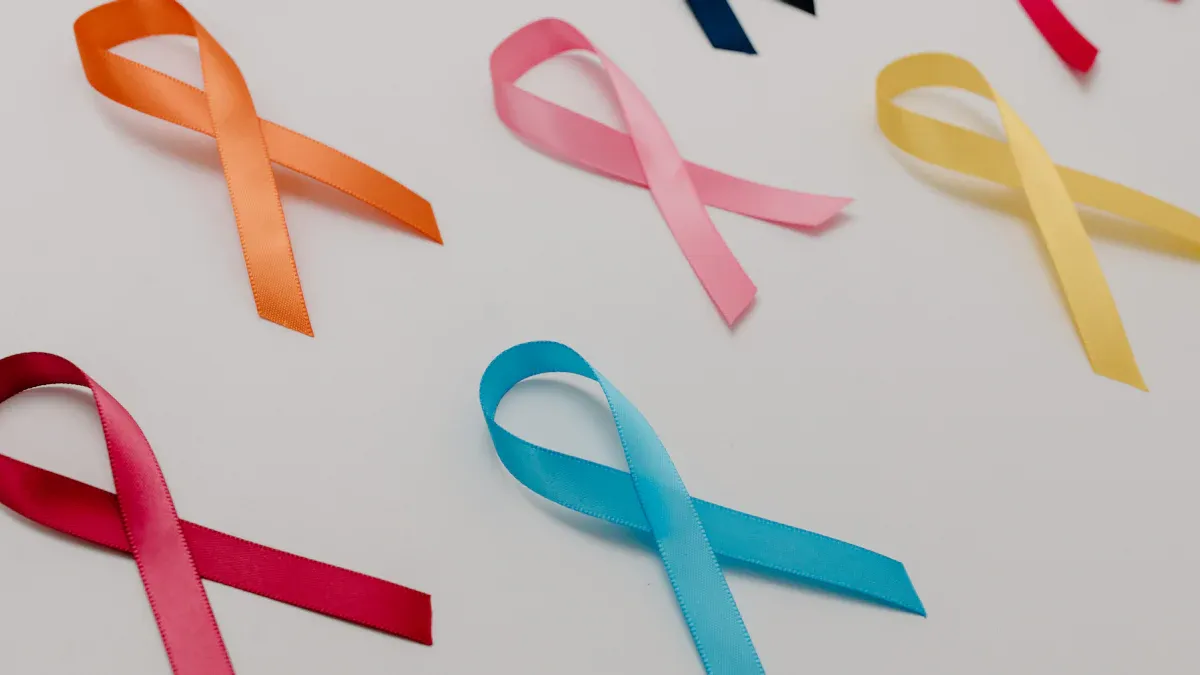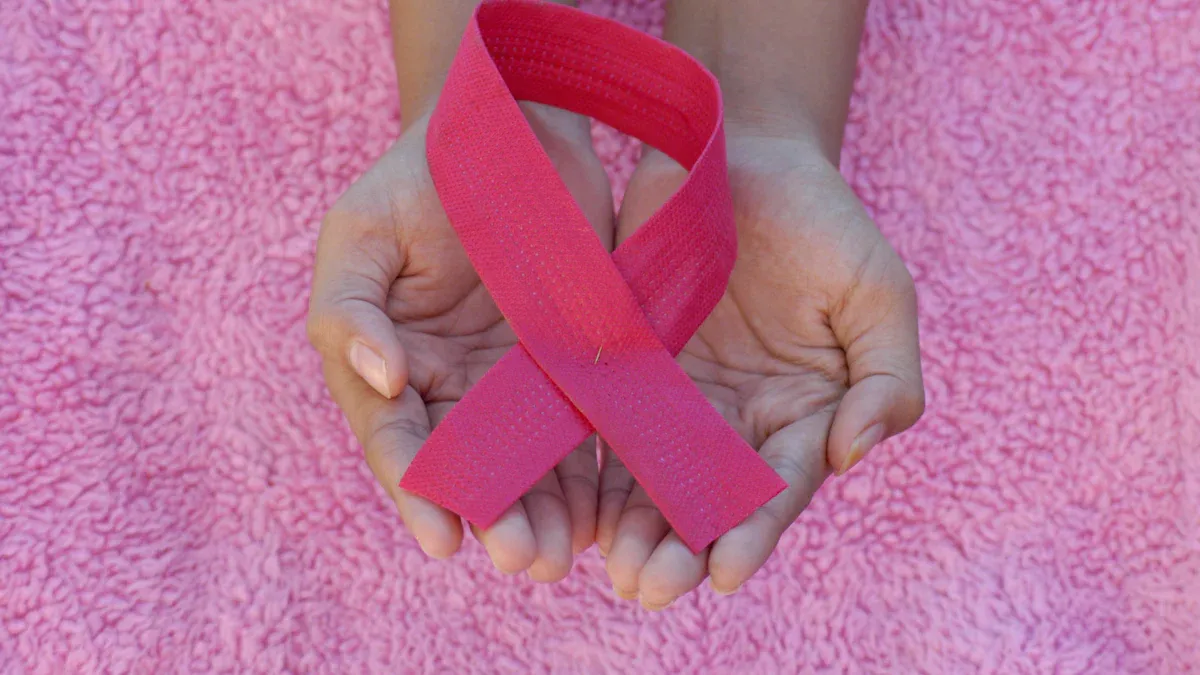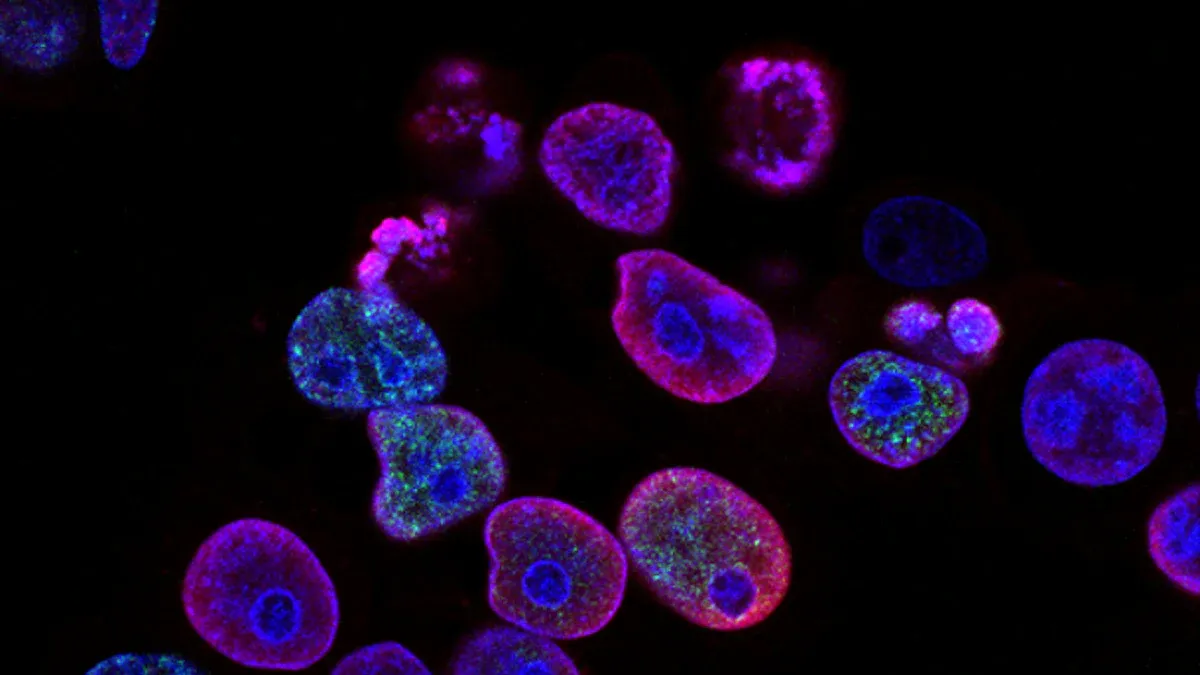Why Can't Cancer Be Cured with One Treatment

Can Cancer Be Cured with Just One Treatment? Why It's More Complicated lies in the complexity and diversity of the disease. Cancer is not a single illness but a collection of over 200 distinct diseases, each with its own unique traits. Even within the same tumor, cancer cells can vary greatly, a phenomenon known as heterogeneity. This diversity makes it nearly impossible to create a one-size-fits-all treatment. For instance, a targeted therapy might eliminate some cancer cells but leave others untouched, allowing the tumor to grow back. Moreover, because cancer originates from your own cells, the vast genetic and molecular differences among cancer types add another layer of difficulty to finding a universal cure.
Key Takeaways
Cancer is not just one illness; it has over 200 types. Each type needs its own special treatment.
Genetic tests find changes in tumor genes. This helps doctors create treatments that work better for each person.
Using multiple treatments together can attack cancer in different ways. This lowers the chance of cancer resisting treatment.
New immunotherapy helps the body’s immune system fight cancer. It gives hope to people with hard-to-treat cancers.
Finding cancer early through tests saves lives. Regular check-ups are very important for better health results.
Can Cancer Be Cured with Just One Treatment? Why It's More Complicated
Cancer Is Not a Single Disease
Over 200 distinct cancer types with unique characteristics
Cancer is not a single illness but a term that describes over 200 unique diseases. Each type arises from uncontrolled cell growth, but the way these cells behave and respond to treatments varies widely. For example, colorectal cancer includes subtypes like CMS1 and CMS4, which differ in molecular characteristics and treatment responses. Similarly, medulloblastomas are divided into groups like SHH and WNT, each requiring distinct approaches. This diversity makes it impossible to treat all cancers with one solution.
Variations in genetic mutations and tumor behavior
Even within the same type of cancer, genetic mutations can vary. A tumor may contain multiple cell populations, each with unique genetic traits. These variations influence how the tumor grows and reacts to therapies. For instance, some mutations make cancer cells resistant to certain drugs, while others may cause rapid growth. This complexity requires treatments tailored to the specific genetic makeup of each tumor.
Subtypes and Their Unique Challenges
Example: Breast cancer subtypes and their differing responses
Breast cancer highlights the challenges of treating cancer subtypes. It includes categories like HER2-positive, hormone receptor-positive, and triple-negative breast cancer. Each subtype responds differently to treatments. HER2-positive cancers often benefit from targeted therapies, while triple-negative cancers lack specific targets, making them harder to treat. These differences show why a one-size-fits-all approach cannot work.
The need for tailored approaches for each subtype
To address these challenges, researchers focus on breaking down cancers into smaller subgroups. This allows for more precise treatments. However, not all subtypes have established therapies yet. Ongoing research into gene alterations and tumor behavior is essential to develop effective solutions for every subtype.
The Role of Genetics and Environment
Genetic predisposition and its influence on cancer
Your genetic makeup plays a significant role in cancer risk. Specific genes, like FOXA2 and RB1, can increase susceptibility. However, genetic factors alone do not determine outcomes. They interact with other variables, making cancer a complex disease to predict and treat.
Environmental and lifestyle factors as contributors
Environmental exposures and lifestyle choices also contribute to cancer development. Factors like smoking, diet, and pollution can trigger genetic changes that lead to cancer. Research initiatives, such as AACR Project GENIE, aim to understand how these elements interact with genetics. This knowledge helps create more effective prevention and treatment strategies.
Challenges in Treating Cancer

Drug Resistance
How cancer cells adapt to evade treatments
Cancer cells are highly adaptable. They can mutate and change their genetic makeup to survive treatments. For example, targeted therapies often focus on specific mutations, but cancer cells may develop new mutations that render these therapies ineffective. This adaptability allows cancer to evade treatments, making it harder for you to achieve long-term remission. Additionally, cancer cells can activate alternative pathways to continue growing, even when one pathway is blocked by a drug.
The emergence of resistant cancer cell populations
Within a single tumor, not all cancer cells are identical. Some cells may already have genetic traits that make them resistant to treatment. When you undergo therapy, these resistant cells survive and multiply, creating a population of cancer cells that no longer respond to the original treatment. This phenomenon, known as clonal selection, is a major reason why cancer often returns after initial success with therapy.
Tumor Microenvironment
The supportive role of the tumor’s surrounding environment
The area around a tumor, known as the tumor microenvironment, plays a crucial role in cancer progression. This environment includes blood vessels, immune cells, and connective tissue, all of which can support tumor growth. For instance, blood vessels supply nutrients and oxygen to the tumor, helping it grow. Immune cells in the microenvironment may also be "hijacked" by the tumor to suppress your body's natural defenses.
Barriers to effective drug delivery
The tumor microenvironment creates physical and chemical barriers that make it difficult for treatments to reach all cancer cells. Dense connective tissue can block drugs from penetrating the tumor. Additionally, irregular blood vessels within the tumor may prevent consistent drug delivery. These barriers reduce the effectiveness of therapies, leaving some cancer cells untreated.
Limitations of Current Therapies
Side effects and toxicity of treatments
Many cancer treatments, such as chemotherapy and radiation, target rapidly dividing cells. While this approach kills cancer cells, it also harms healthy cells, leading to side effects like hair loss, fatigue, and nausea. Even newer targeted therapies, which aim to minimize damage to healthy cells, can cause side effects. For example, some targeted drugs may affect your heart or liver, limiting their use.
Challenges in targeting all cancer cells
Cancer cell heterogeneity makes it difficult to eliminate every cancer cell in your body. A single tumor may contain multiple cell populations, each with unique characteristics. Biopsies taken from one part of the tumor may not represent its full diversity, leading to incomplete treatment plans. This heterogeneity increases the risk of leaving behind cancer cells that can grow and spread, causing relapse.
The Role of Personalized Medicine
Tailoring Treatments to Individuals
Genetic testing to identify specific mutations
Personalized medicine begins with understanding the unique genetic makeup of your cancer. Genetic testing identifies specific mutations in your tumor, helping doctors determine which treatments are most likely to work. For example, if your cancer has a mutation in the EGFR gene, targeted therapies like erlotinib may be effective. This approach ensures that treatments focus on the root cause of your cancer rather than using a generalized method.
Matching therapies to the patient’s unique cancer profile
Your cancer is as unique as your fingerprint. Factors like genetic mutations, protein expression, and even environmental exposures shape its behavior. Precision medicine uses this information to match therapies to your specific cancer profile. Clinical trials, such as NCI-MATCH, have shown that tailoring treatments based on genetic characteristics improves outcomes. This strategy not only increases effectiveness but also reduces unnecessary side effects.
Advances in Targeted Therapies
Drugs designed to target specific cancer pathways
Targeted therapies represent a significant advancement in cancer treatment. These drugs are designed to block specific pathways that cancer cells use to grow and spread. For instance, drugs like imatinib target the BCR-ABL protein in chronic myeloid leukemia, effectively halting cancer progression. By focusing on these pathways, targeted therapies spare healthy cells, minimizing damage to your body.
Example: Immunotherapy and its impact on certain cancers
Immunotherapy is another breakthrough in personalized medicine. It harnesses your immune system to fight cancer. Drugs like pembrolizumab, which block the PD-1 protein, have shown remarkable success in treating cancers like melanoma and non-small cell lung cancer. Immunotherapy not only improves survival rates but also offers hope for cancers that were once considered untreatable.
The Promise of Precision Medicine
Combining data from genetics, lifestyle, and environment
Precision medicine goes beyond genetics. It combines data from your lifestyle, environment, and even microbiome to create a comprehensive treatment plan. Programs like the All of Us Research Program aim to gather diverse data to understand how these factors interact. This holistic approach ensures that treatments address not just the cancer but also the factors contributing to its development.
Moving toward more effective and less toxic treatments
The future of cancer treatment lies in precision medicine. By integrating big data from initiatives like AACR Project GENIE, researchers can identify new therapeutic targets and develop less toxic treatments. This approach moves us closer to a world where cancer care is not only more effective but also tailored to your unique needs.
Personalized medicine is transforming the way we treat cancer. By focusing on the individual, it offers a path to more precise, effective, and compassionate care.
Progress in Cancer Research

Early Detection and Screening
Advances in imaging and biomarker identification
Early detection plays a vital role in improving cancer outcomes. Recent advancements in imaging technologies and biomarker identification have revolutionized how you can detect cancer at its earliest stages. For example, genetic tests like MammaPrint and Therascreen® help identify specific mutations, enabling doctors to predict cancer risk and tailor prevention strategies. Vaccines targeting cancer-causing viruses, such as HPV, have also shown remarkable success in reducing cancer incidence. These innovations highlight the growing integration of precision medicine into early detection efforts.
Importance of early detection for better outcomes
Detecting cancer early significantly improves survival rates. Routine screenings for cancers like breast, colorectal, and prostate allow doctors to identify malignant lesions before they spread. For instance:
Pap smears, combined with HPV testing, have drastically reduced cervical cancer cases by identifying cellular changes early.
In 2018, the U.S. saw 1.7 million cancer diagnoses, with 609,000 deaths. Early detection through screenings has helped reduce these numbers.
By prioritizing early detection, you can benefit from less invasive treatments and better long-term outcomes.
Breakthroughs in Immunotherapy
Harnessing the immune system to fight cancer
Immunotherapy has transformed cancer treatment by empowering your immune system to target and destroy cancer cells. Therapies like checkpoint inhibitors, such as pembrolizumab, block proteins that prevent immune cells from attacking tumors. This approach has shown success in treating cancers like melanoma and lung cancer. Researchers are also exploring cancer vaccines that use neoantigens to stimulate lasting immune responses, offering hope for more effective treatments.
Success stories and ongoing challenges
Immunotherapy has achieved remarkable milestones. For example:
Neoadjuvant therapies for liver cancer have made previously inoperable tumors resectable.
Combining cancer vaccines with anti-PD1 therapy has enhanced immune responses in pancreatic cancer.
Despite these successes, challenges remain, including high costs and the need for personalized approaches. However, ongoing research continues to refine these therapies, bringing new possibilities to light.
Combination Treatments
Using multiple therapies to overcome resistance
Cancer cells often develop resistance to single treatments, making combination therapies essential. By using multiple approaches, you can target cancer from different angles, reducing the likelihood of resistance. For instance, combining chemotherapy with immunotherapy has shown promise in shrinking tumors and improving survival rates. This strategy ensures that even the most stubborn cancer cells are addressed.
Examples of successful combination approaches
Combination treatments have already demonstrated success in clinical settings. For example:
In colorectal cancer, combining temozolomide with anti-PD1 therapy has sensitized resistant tumors, opening new treatment avenues.
Immune archetypes, which track immune cell activity, have helped researchers design more effective combinations.
These examples highlight the potential of combining therapies to tackle cancer’s complexity and improve outcomes for you.
Cancer research continues to evolve, offering new hope through early detection, immunotherapy, and combination treatments. These advancements bring us closer to more effective and personalized solutions.
Cancer’s complexity and diversity make a single cure impossible. Each type behaves differently, requiring unique approaches. Advances in personalized medicine and research offer hope for more effective solutions. Genetic testing, targeted therapies, and combination treatments are transforming how you fight cancer. Collaboration among researchers, doctors, and patients drives innovation. By supporting ongoing efforts, you contribute to a future where cancer care becomes more precise and less invasive. Can Cancer Be Cured with Just One Treatment? Why It's More Complicated highlights the need for continued progress in understanding and treating this disease.
FAQ
What makes cancer so hard to treat?
Cancer is complex and diverse. It includes over 200 types, each with unique traits. Even within one tumor, cells can vary. This diversity makes it difficult to create a universal treatment. Cancer cells also adapt quickly, resisting therapies and complicating treatment further.
Can lifestyle changes reduce cancer risk?
Yes, lifestyle changes can lower your risk. Avoid smoking, eat a balanced diet, and exercise regularly. Protect your skin from UV rays and limit alcohol consumption. These steps reduce exposure to cancer-causing factors and improve overall health.
Why do some cancers come back after treatment?
Cancer cells can survive treatment by mutating or hiding in the body. These resistant cells may grow again, causing a relapse. This is why follow-up care and monitoring are essential after treatment.
How does immunotherapy differ from chemotherapy?
Immunotherapy boosts your immune system to fight cancer. Chemotherapy, on the other hand, kills rapidly dividing cells, including cancer cells. Immunotherapy targets cancer more precisely, often with fewer side effects than chemotherapy.
Are there any promising new cancer treatments?
Yes, researchers are exploring exciting advancements like CAR-T cell therapy and cancer vaccines. These treatments show promise in targeting specific cancers more effectively. Ongoing clinical trials continue to refine these approaches for better outcomes.
💡 Tip: Stay informed about new treatments by consulting your doctor or following trusted medical sources.
See Also
An In-Depth Overview of Various Cancer Types Available
Recognizing Symptoms and Treatment Options for Duodenal Cancer
Choriocarcinoma Explained: Symptoms, Diagnosis, and Treatment Options
Exploring Cancer Types Associated with AIDS and Their Risks
Symptoms and Treatment Approaches for Adrenocortical Adenoma
